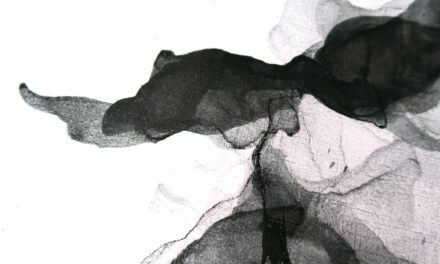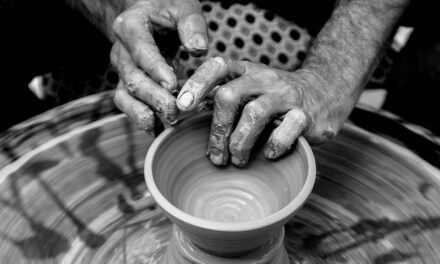Faux painting, a technique that mimics the appearance of materials such as marble, wood, or stone, has a rich and varied history that dates back to ancient civilisations. The origins of this art form can be traced to the Roman Empire, where artisans employed sophisticated techniques to create the illusion of opulence in their homes and public buildings. These early practitioners used natural pigments and simple tools to replicate the look of expensive materials, allowing them to adorn their spaces with a semblance of luxury without the associated costs.
As the centuries progressed, faux painting evolved alongside artistic movements, adapting to the tastes and preferences of different eras. During the Renaissance, for instance, the technique gained prominence as artists sought to enhance the grandeur of palaces and churches, employing trompe-l’œil methods to create stunning visual effects that captivated viewers. The Baroque period further propelled faux painting into the limelight, as it became a staple in the lavish interiors of aristocratic homes across Europe.
Craftsmen developed increasingly intricate techniques, such as marbling and wood graining, to imitate the textures and colours of rare materials. This period also saw the rise of decorative painters who specialised in creating elaborate murals and ceiling designs, transforming ordinary spaces into breathtaking works of art. By the 18th and 19th centuries, faux painting had become widely accessible, with instructional manuals and workshops emerging to teach aspiring artists the craft.
The Industrial Revolution brought about new materials and tools, making faux painting techniques even more versatile and popular among homeowners seeking to elevate their interiors. Today, faux painting continues to thrive as a beloved decorative technique, blending traditional methods with contemporary styles to create unique and personalised spaces.
Summary
- Faux painting has a rich history dating back to ancient times, with techniques evolving over the centuries.
- Materials and tools needed for faux painting include base coats, glazes, brushes, sponges, and various application tools.
- Different faux painting techniques include sponging, ragging, stippling, marbling, and wood graining.
- When choosing the right faux painting technique for your space, consider the desired aesthetic, the existing decor, and the overall atmosphere you want to create.
- Tips and tricks for faux painting include practicing on a sample board, blending colours seamlessly, and using the right tools for each technique.
Materials and Tools Needed for Faux Painting
Preparing for a Faux Painting Project
To embark on a faux painting project, one must gather a variety of materials and tools that will facilitate the creation of stunning effects. The foundation of any faux painting endeavour is high-quality paint; both water-based and oil-based paints can be used depending on the desired finish and texture. It is essential to select a base coat that complements the intended faux effect, as this will serve as the backdrop for subsequent layers.
Choosing Colours and Tools
Additionally, a range of colours should be chosen to achieve depth and dimension; for instance, when mimicking marble, shades of white, grey, and black may be required to replicate the natural veining found in real stone. In terms of tools, a variety of brushes and applicators are necessary to achieve different textures and finishes. A standard paintbrush is essential for applying base coats, while specialty brushes such as sponge rollers, stippling brushes, or combs can be employed for creating specific faux effects.
Specialised Tools for Advanced Techniques
A sea sponge is particularly useful for techniques like rag rolling or sponging, as it allows for soft blending and layering of colours. Other helpful tools include painter’s tape for clean edges, drop cloths to protect surfaces from paint splatters, and trays for mixing paints. For more advanced techniques, tools such as trowels or palette knives may be used to create textured finishes that resemble plaster or stucco.
Ensuring a Smooth Process
By assembling these materials and tools before starting a project, one can ensure a smoother process and more successful results.
Different Faux Painting Techniques

Faux painting encompasses a wide array of techniques that can transform a space into a work of art. One popular method is the sponge technique, which involves using a sea sponge to apply paint in a dabbing motion. This technique creates a soft, textured effect that can mimic natural surfaces like stone or fabric.
By layering different colours and varying the pressure applied with the sponge, one can achieve a unique look that adds depth and interest to walls or furniture. Another widely used technique is rag rolling, where a rag is rolled over wet paint to create a textured finish reminiscent of linen or other fabrics. This method is particularly effective for creating subtle patterns that enhance the overall aesthetic without overwhelming the space.
Marbling is another sophisticated faux painting technique that has stood the test of time. It involves layering multiple colours to replicate the intricate veining found in natural marble. This technique requires precision and skill, as it often necessitates the use of specific brushes or tools to achieve realistic results.
Additionally, wood graining is a popular choice for those looking to imitate the appearance of wood without the expense or maintenance associated with real timber. This technique typically involves using a combination of base coats and glazes applied with special brushes designed to mimic wood grain patterns. Each of these techniques offers unique possibilities for creativity and expression, allowing individuals to personalise their spaces in ways that reflect their tastes and preferences.
Choosing the Right Faux Painting Technique for Your Space
Selecting the appropriate faux painting technique for a given space requires careful consideration of various factors, including the room’s purpose, existing decor, and personal style. For instance, in a formal dining room or living area where elegance is paramount, techniques such as marbling or Venetian plaster may be ideal choices. These methods evoke sophistication and luxury while adding visual interest without overwhelming the senses.
Conversely, in more casual spaces like children’s rooms or play areas, techniques such as sponge painting or rag rolling can introduce playful patterns and colours that inspire creativity and joy. Another crucial aspect to consider is the size and lighting of the room. In smaller spaces or those with limited natural light, lighter colours and softer textures can help create an illusion of openness and airiness.
Techniques that incorporate subtle colour variations or soft gradients may be particularly effective in these settings. On the other hand, larger rooms can accommodate bolder choices; darker hues or more intricate patterns can add drama and depth without making the space feel cramped. Ultimately, choosing the right faux painting technique involves balancing personal preferences with practical considerations to create an environment that feels harmonious and inviting.
Tips and Tricks for Faux Painting
Embarking on a faux painting project can be both exciting and daunting; however, with some helpful tips and tricks, one can navigate the process with greater ease. First and foremost, preparation is key. Before applying any paint, it is essential to thoroughly clean and prime surfaces to ensure proper adhesion and longevity of the finish.
Using painter’s tape along edges and trim can help achieve crisp lines and prevent unwanted smudges or overlaps during application. Additionally, testing colours on a small section of wall before committing to a full application allows one to visualise how different shades interact with lighting throughout the day. Another valuable tip is to work in small sections rather than attempting to cover an entire wall at once.
This approach allows for better control over blending techniques and ensures that paint remains wet enough for manipulation before it dries. When layering colours or textures, it is advisable to start with lighter shades first before gradually building up darker tones; this method creates depth while maintaining balance within the overall design. Lastly, embracing imperfections can lead to unique results; faux painting is an art form that thrives on creativity and experimentation.
By allowing oneself the freedom to explore different techniques without fear of making mistakes, one can achieve truly remarkable outcomes that reflect individual style.
Common Mistakes to Avoid in Faux Painting

Common Pitfalls in Faux Painting
While faux painting can yield stunning results when executed correctly, there are several common pitfalls that novices may encounter during their projects. One frequent mistake is neglecting proper surface preparation; failing to clean or prime walls adequately can lead to poor adhesion and uneven finishes. Additionally, rushing through the process often results in visible brush strokes or uneven colour application.
Preparation is Key
Taking time to prepare surfaces properly and allowing each layer to dry before proceeding can significantly enhance the final outcome. This simple yet crucial step can make all the difference in achieving a professional-looking finish.
Colour Selection and Lighting Considerations
Another common error involves choosing inappropriate colour combinations or techniques that do not suit the space’s overall aesthetic. It is crucial to consider how different colours interact with existing furnishings and decor elements before committing to a particular scheme. Furthermore, many individuals underestimate the importance of lighting when selecting colours; what appears vibrant in artificial light may look dull in natural light conditions.
Research and Testing
Conducting thorough research on colour theory and testing samples in various lighting scenarios can help avoid these missteps. By taking the time to properly prepare and research, individuals can ensure a successful faux painting project that yields the desired results.
Faux Painting in Contemporary Interior Design
In recent years, faux painting has experienced a resurgence in popularity within contemporary interior design circles. As homeowners seek unique ways to personalise their spaces while maintaining an air of sophistication, faux finishes offer an appealing solution that combines artistry with practicality. Designers are increasingly incorporating faux techniques into their projects to create statement walls or accent features that draw attention without overwhelming other design elements.
For instance, a marbled feature wall can serve as a stunning backdrop for minimalist furniture arrangements while adding depth and character to an otherwise simple space. Moreover, advancements in paint technology have expanded the possibilities for faux painting in modern design contexts. New formulations allow for greater durability and ease of application while offering an extensive range of colours and finishes that cater to diverse tastes.
As sustainability becomes an increasingly important consideration in design choices, many manufacturers now produce eco-friendly paints that do not compromise on quality or aesthetic appeal. This shift towards environmentally conscious products aligns perfectly with contemporary design trends prioritising sustainability without sacrificing style.
Resources for Learning More about Faux Painting
For those interested in delving deeper into the world of faux painting, numerous resources are available to enhance knowledge and skills in this captivating art form. Books dedicated to decorative painting techniques provide comprehensive guides covering everything from basic principles to advanced methods; these texts often include step-by-step instructions accompanied by vivid illustrations that make learning accessible for beginners and seasoned artists alike. Online platforms such as YouTube also offer an abundance of tutorials showcasing various faux techniques; these visual resources allow viewers to observe skilled artisans at work while providing valuable tips for achieving similar results.
Additionally, local community colleges or art centres frequently offer workshops focused on faux painting techniques; these hands-on experiences provide opportunities for participants to learn directly from experienced instructors while receiving personalised feedback on their work. Engaging with online forums or social media groups dedicated to home improvement or decorative arts can also foster connections with fellow enthusiasts who share insights and inspiration related to faux painting projects. By exploring these resources, aspiring faux painters can cultivate their skills while discovering new techniques that elevate their creative expression within interior design.
For those intrigued by the creative possibilities of faux painting, exploring other art forms can provide further inspiration and depth. A recommended read is An Introduction to Renaissance Art, which delves into a pivotal era that significantly influenced artistic techniques and aesthetics. Understanding the principles and masterpieces of the Renaissance can enrich one’s appreciation of texture and detail, elements that are crucial in mastering faux painting. This article offers a comprehensive overview, making it an excellent resource for expanding your artistic knowledge.




